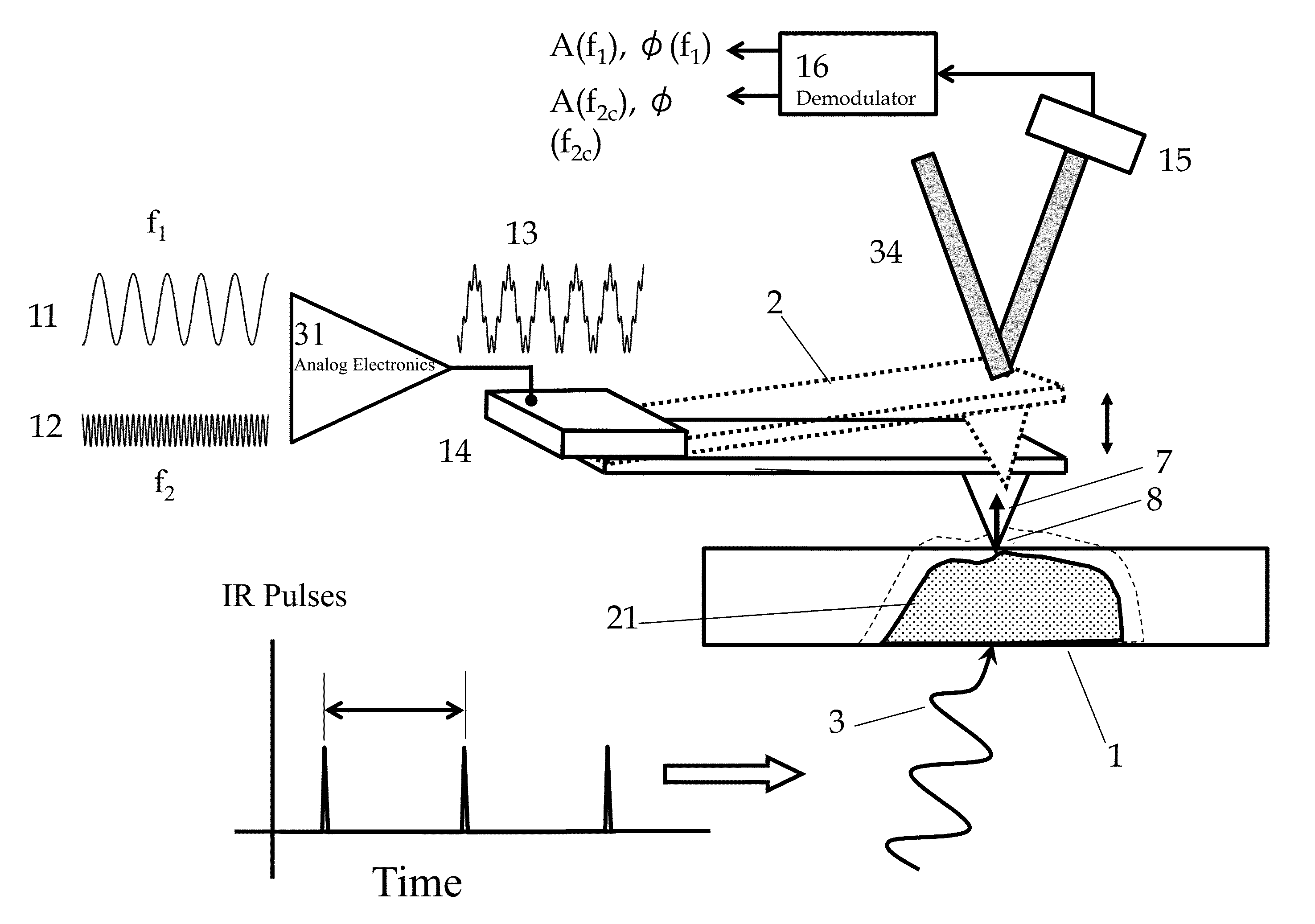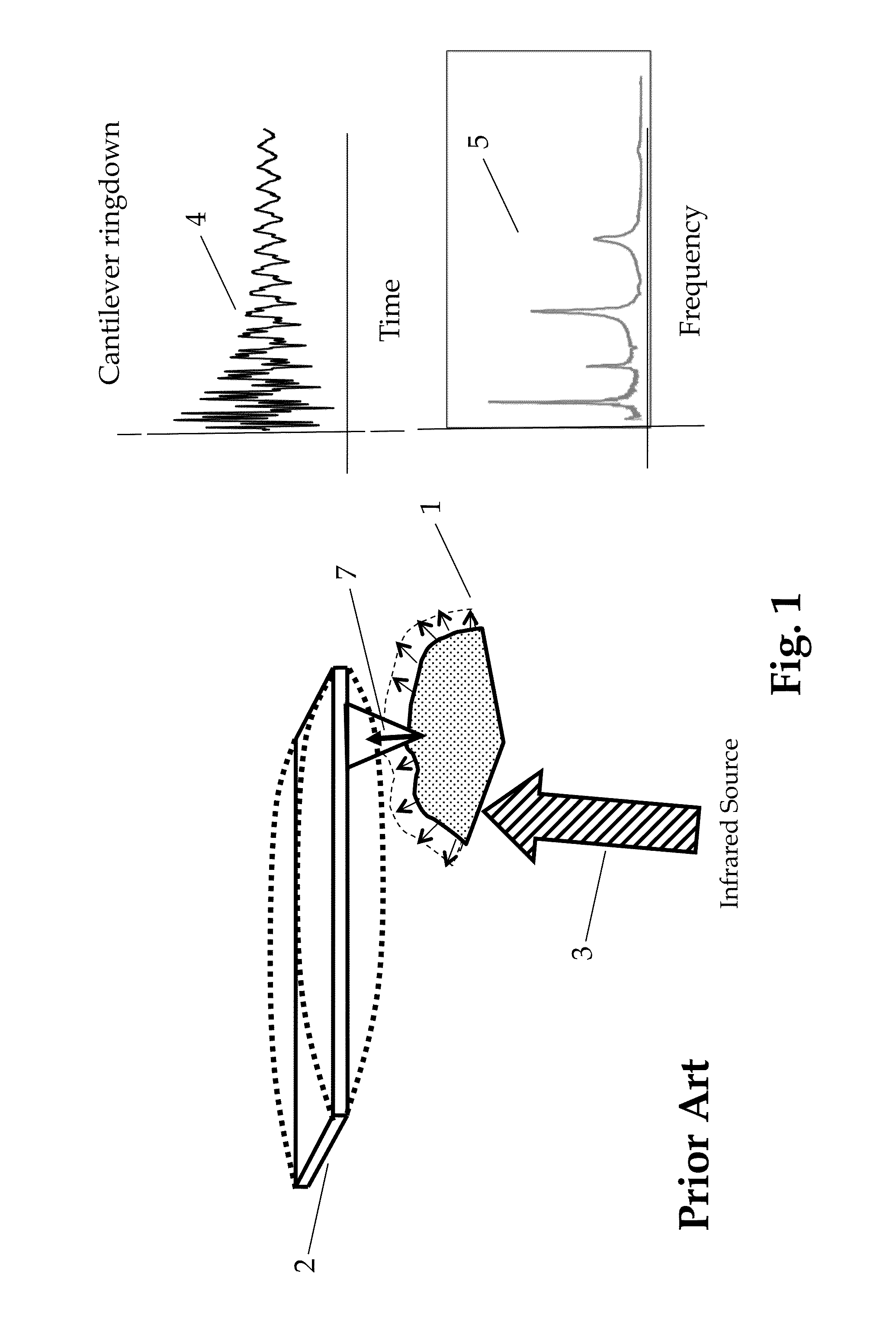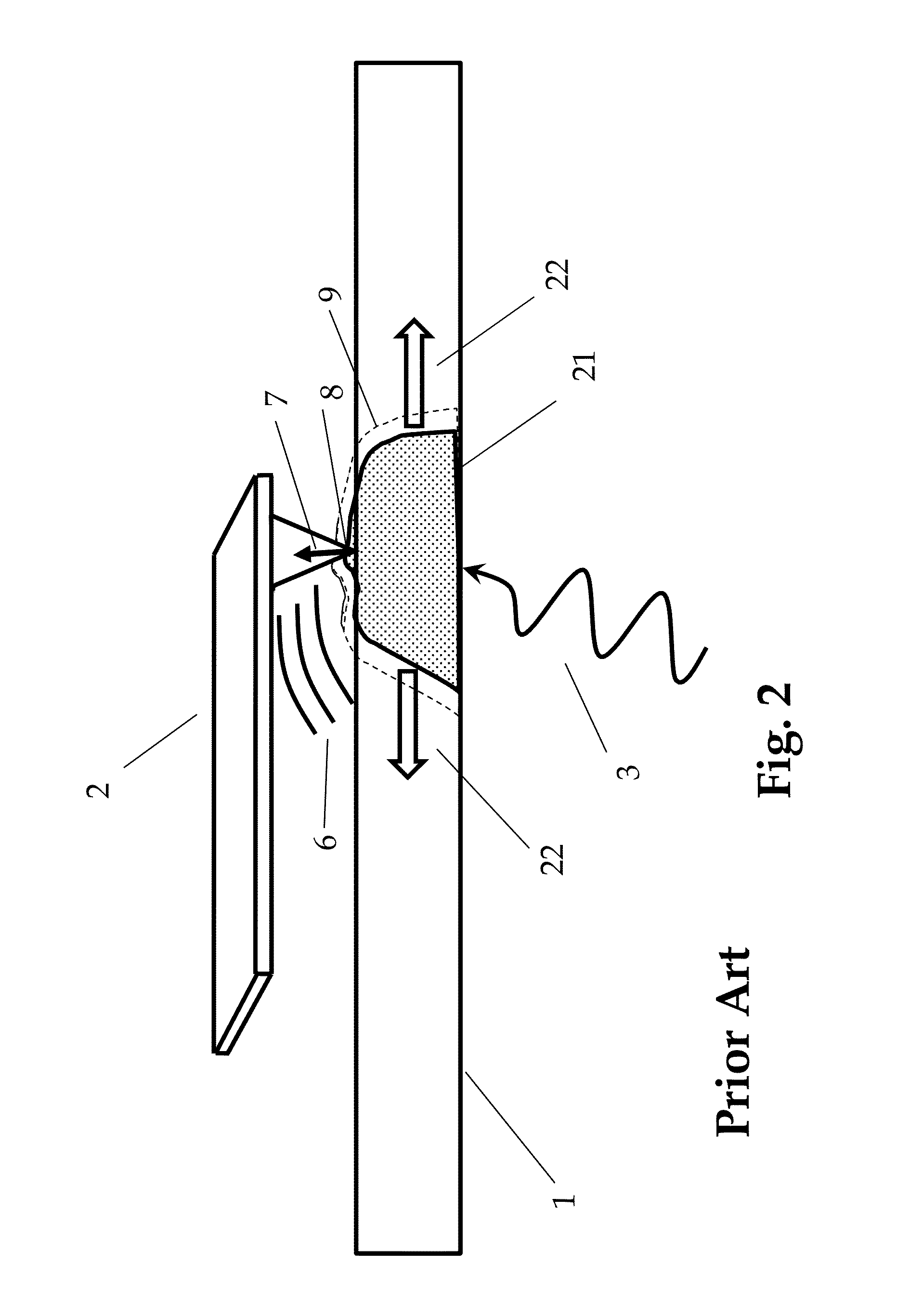Multiple modulation heterodyne infrared spectroscopy
a heterodyne infrared and multimodulation technology, applied in the field of high-localized infrared (ir) spectra, can solve the problems of limiting the technique for some applications, addressing any specific practical implementation, and reducing the resolution of conventional ir spectroscopy and microscopy
- Summary
- Abstract
- Description
- Claims
- Application Information
AI Technical Summary
Benefits of technology
Problems solved by technology
Method used
Image
Examples
Embodiment Construction
[0025]Referring to FIG. 1 the basics for a prior art PTIR system are shown. Sample 1 is probed by an AFM with a cantilever probe 2. The interaction between the probe and sample may be contact, non-contact, near contact, intermittent contact and / or tapping or other method of interaction that generates a measurable probe response as a function of the interaction. A pulsed IR beam 3 is directed at the sample 1. Adsorption of the beam will cause localized heating in the sample resulting in a thermal expansive interaction with the probe tip resulting in a decaying contact resonance ringdown 4. The characteristics of this ringdown waveform, which may be characterized by a spectrum of the waveform 5, depend on the absorption properties of the material under the tip. If the measurement is repeated at multiple source wavelengths as absorption spectra may be produced, leading to identification of the material in the immediate vicinity of the probe tip.
[0026]FIG. 2 illustrates that the forces ...
PUM
| Property | Measurement | Unit |
|---|---|---|
| beam modulation frequency | aaaaa | aaaaa |
| frequency | aaaaa | aaaaa |
| resonance frequencies | aaaaa | aaaaa |
Abstract
Description
Claims
Application Information
 Login to View More
Login to View More - R&D
- Intellectual Property
- Life Sciences
- Materials
- Tech Scout
- Unparalleled Data Quality
- Higher Quality Content
- 60% Fewer Hallucinations
Browse by: Latest US Patents, China's latest patents, Technical Efficacy Thesaurus, Application Domain, Technology Topic, Popular Technical Reports.
© 2025 PatSnap. All rights reserved.Legal|Privacy policy|Modern Slavery Act Transparency Statement|Sitemap|About US| Contact US: help@patsnap.com



